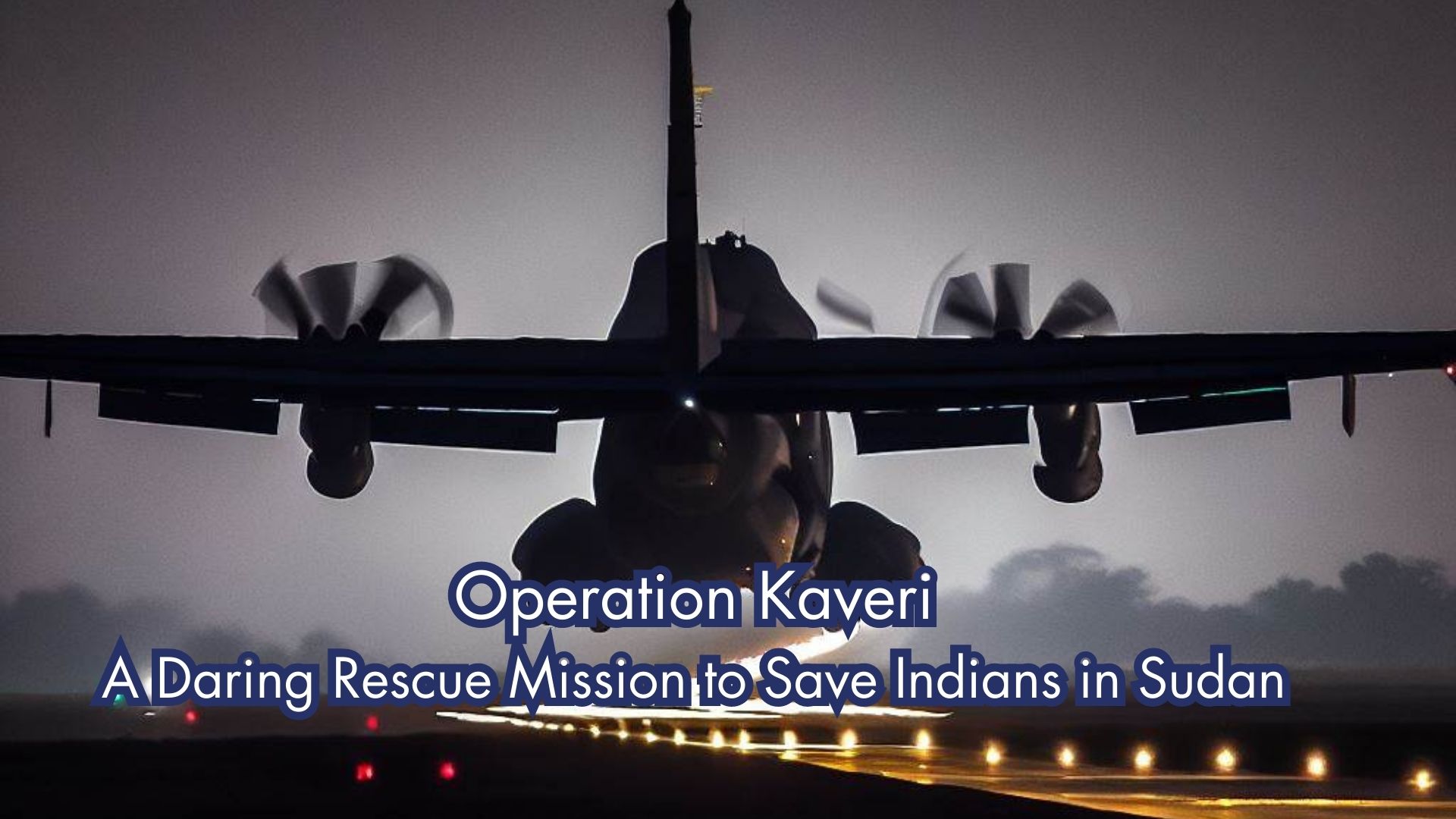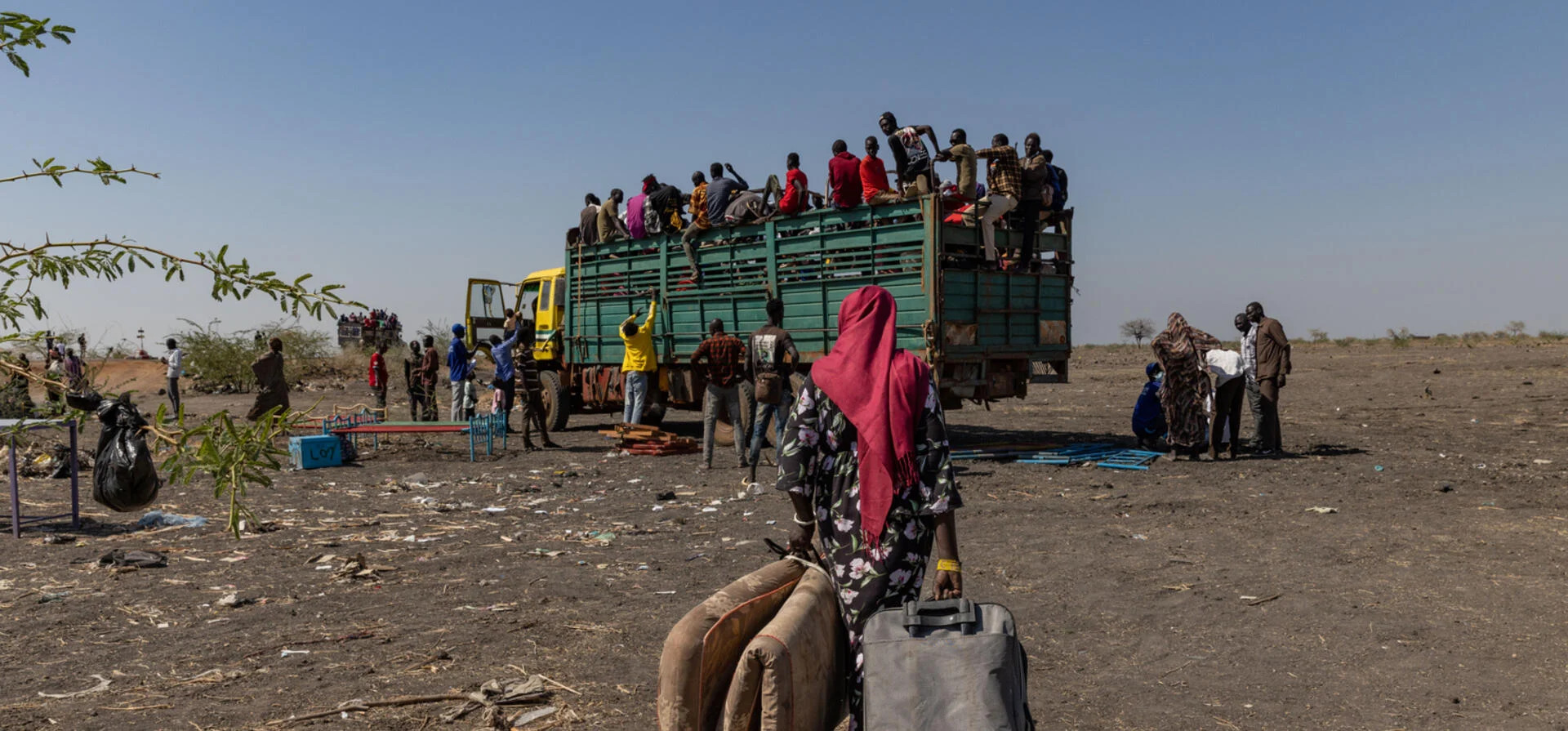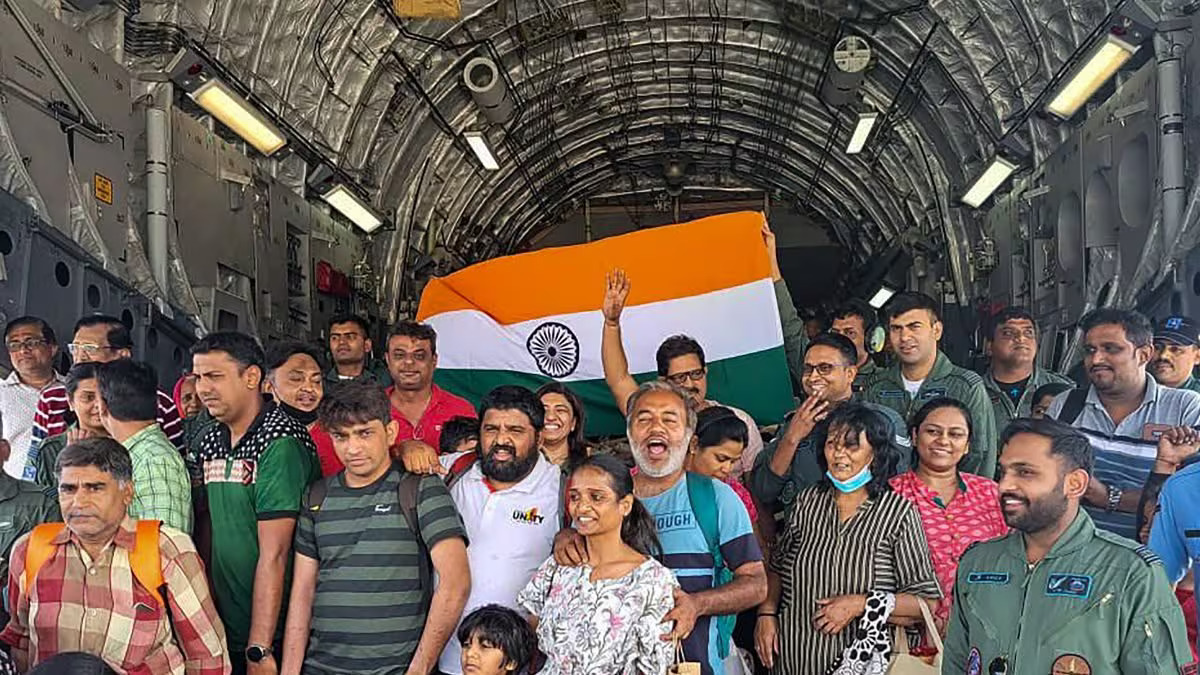
India has several brave evacuations to its credit, where pilots have landed their planes in war zones and sailors cast anchor in ‘troubled waters’ to bring back stranded Indians home. The operation stands as a testament to the unwavering commitment of India to protect its citizens and the collaboration between government agencies to execute a successful evacuation. There is a long list of such operations conducted by India, starting from The Kuwait airlift during the crisis in Gulf in 1990 to Operation Ganga to rescue our stranded students from the war-hit Ukraine. India stands unique globally when it launched an elaborate operation called ' Vande Bharat' to bring back the stranded in different countries in the Covid-19 pandemic-hit world. Similarly, Operation Kaveri was a courageous and meticulously planned rescue mission that aimed to save Indian nationals stranded in war-torn Sudan.
The Background: Crisis in Sudan

Sudan, a country in northeastern Africa, had been grappling with internal conflicts and civil unrest for years. The situation escalated to a point where the safety of foreign nationals, including Indians, was severely compromised. Families were separated, and lives were at stake as violence and instability gripped the nation.
Operation Kaveri Takes Shape
In response to the escalating crisis, the Government of India swiftly initiated Operation Kaveri. Named after the revered Kaveri River, symbolizing the flow of life, the operation was aimed at rescuing and evacuating Indian citizens from the volatile regions of Sudan. The mission required meticulous planning, coordination, and execution involving multiple government agencies, including the Ministry of External Affairs, the Indian Armed Forces, and intelligence agencies.
Challenges and Triumphs
Operation Kaveri was not without its challenges. The operation had to navigate through dangerous territories, logistical hurdles, and communication constraints. The security of the stranded citizens was of paramount importance, and every step was taken to ensure their safe passage. The Indian Armed Forces played a crucial role in providing security and logistics support throughout the operation.
One of the defining moments of Operation Kaveri was the successful evacuation of Indian nationals from conflict zones to safe locations. This required both strategic manoeuvring and compassionate efforts to ensure that families were reunited and citizens were shielded from harm's way. Operation Kaveri not only showcased the resilience of Indian nationals in times of adversity but also highlighted the importance of diplomatic collaborations. The Indian government worked closely with international organizations, foreign governments, and non-governmental agencies to facilitate the evacuation process. The collective effort underscored the significance of international solidarity during times of crisis.
The Indian community of nearly 4000 people comprises Gujarati traders, South Indians and a nomadic tribal people from Karnataka called Hakki Pikki, who became very famous for their herbal medicines. The Embassy of India in Khartoum arranged the transportation of citizens to Port Sudan, over 800 kilometres from the capital of Sudan.

On 24 April 2023, The Indian Naval ship INS Sumedha reached the Port of Sudan and transported these rescued Indians from Port Sudan to Jeddah in Saudi Arabia. Two Indian Air Force C-130J stationed in Jeddah Airport brought them to New Delhi. The similar seamless operation continued for the next ten days. Some more ships and aircraft were added to the evacuation operations.

Daring Air Operation
Many aged, handicapped and pregnant women were unable to undertake the gruelling journey of 800 km to Port Sudan. They were brought to Wadi Seidna Air Base 40 km away from Khartoum, the capital city of Sudan where fierce fighting was taking place between the warring factions. A daring Air rescue of these stranded people was planned from this abandoned Air Base.
On the pitch-dark midnight of April 27–28, a C-130J aircraft of the Indian Air Force captained by Group Captain Ravi Nanda flew over the Air Base. The flight was dangerous, as fighting was going on in this area, approaching the airstrip, the IAF pilots used their onboard electro-optical and infrared sensors to ensure that the runway was free of obstructions and no inimical forces were in the vicinity. The pilots adopted a tactical approach — as done in war zones — using night vision goggles and carried out a precautionary landing. On landing, the aircraft engines were kept running while eight IAF Garud commandos, fully armed with automatic weapons, located, verified and secured the passengers and their luggage into the aircraft. The aircraft take-off from the runway was again carried out with night vision goggles. Thus 121 incapacitated Indians were rescued from the epicentre of the war zone.
During this successful evacuation, IAF had undertaken 17 flights and five sorties of Navy ships had rescued a total of 3,862 Indians from Sudan.
A Beacon of Hope and Unity

Operation Kaveri serves as a beacon of hope, illustrating the unwavering commitment of a nation to protect its citizens, irrespective of the challenges. It showcases the power of collaborative efforts, effective planning, and the indomitable spirit of human compassion. The successful execution of Operation Kaveri not only saved lives but also stood as a testament to the courage and dedication of those who put their lives on the line to ensure the safety of others.
In a world often divided by boundaries, Operation Kaveri reminds us of the inherent humanity that unites us all. It serves as a reminder that even in the face of adversity, nations can rise above their differences to stand together and extend a helping hand to those in need.
NEXT ARTICLE

Shri Ramachandra Prasad's captivating narrative and the hot chai that was served at the right time transported me to ancient Kerala, where the extraor...

Introduction In Bharatvarsha, History is not the account narrated by victors. It is the record left behind by survivors. The study of Indian History...

It is the first-half of the 8th Century C.E. in South India. The Pallava kingdom possesses strength and prosperity with some of the greatest monument...